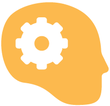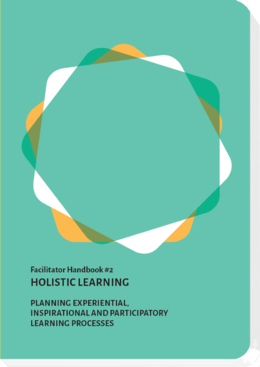Check: Addressing Transversal Competences
Methods need to be appropriate for the development of knowledge, skills and attitudes. Check, to what extent the fields of key competences are addressed:
Task-specific factual competence
Do your methods help your participants to:
Identify adequate, knowledge-based solutions for tasks and problems?
Expertise in the specific field or topic of your training...
...and how it relates systematically within its field and to other fields
Methodological competence
Are you offering adequate opportunities for training and conscious, goal-oriented action?
Choosing and implementing methodologies and tools on a justified basis.
Experience with different approaches toward a goal or problem.
Experiential learning in real challenges
Social competence
Can your participants consciously experience their relationship with other people?
Cooperation and teamwork
Constructively dealing with diversity, difference or conflict.
Personal competence/Learning to Learn
Do you leave enough space for your participants to act autonomously,in a self-organized and reflective way?
Addressing learners' self-responsibility and their active involvement of existing competences
Training reflection and assessment skills in regard to own experience, action or opportunities.
Adressing self-organization and learning-to-learn.
Balancing Diverse Needs
A variety of methods in your training can correspond to the diverse needs of your target group. The challenge is to get the attention of all your participants, despite their differing and shifting needs and preferences concerning the methods. Creative and diversified learning arrangements address different senses and stimulate participants’ motivation and attention. For example:
Balance
activity - cognition
creativity - monotony
group work - individual work
playfulness - seriousness
experience - theory
mobility - fixed location
So after a phase of playfulness, seriousness helps us to refocus. After a phase of group work, some people enjoy an opportunity for individual reflection.
Inhale and Exhale
Learning is a balanced circle of a learners activity ("breath out") and a more passive observing/reflecting role ("breath in"). Both need to be balanced and you might mix methods that address active experimentation with those that allow observation and reflection. After active involvement participants need a relaxation phase. After input participants wish often to become active again.
Action, experimentation
|
Observation, consumption, reflection
|
Divergent and Convergent Thinking
Divergent ThinkingExploring new and original ideas about a topic and drawing inspiration from the ideas or action of others leads to a colorful bouquet of opportunities. It enables participants to collect material for later reasoning, be mentally open for new experience, gain inspiration. |
Convergent ThinkingTo enable learners' creative potential, the learning process should also encompass activities which challenge learners' capacities for convergence - evaluating, selecting, reasoning. Evaluate and organize impressions and insights, Follow a goal and finalize processes, Deepen their understanding of a certain topic or process |
Head-Heart-Hand/Different Competence Dimensions
Make sure that participants' whole personalities and a diversity of learning preferences are addressed. The goal is that in larger periods of time (half days or days of a training), we use a variety of cognitive, emotional and practical learning, addressing knowledge, attitude and skills.
Cognition
|
Emotion
|
Practice
|
Handbook for Facilitators: Holistic Learning
E. Heublein (ed.), N. Zimmermann (ed.) (2017). Holistic learning. Planning experiential, inspirational and participatory learning processes. Competendo Handbook for Facilitators.

Elke Heublein
Co-founder of Working Between Cultures. Co-author of Holistic learning. Facilitator since 2004, certified intercultural facilitator (Institute for Intercultural Communikation, LMU München) and trainer (IHK Akademie München/Westerham), adult education (Foundation University Hildesheim). Focus: Cooperation and leadership in heterogenouos teams, higher education, train-the-trainer.
Nils-Eyk Zimmermann
Editor of Competendo. He writes and works on the topics: active citizenship, civil society, digital transformation, non-formal and lifelong learning, capacity building. Coordinator of European projects, in example DIGIT-AL Digital Transformation in Adult Learning for Active Citizenship, DARE network.
Blogs here: Blog: Civil Resilience.
Email: nils.zimmermann@dare-network.eu














